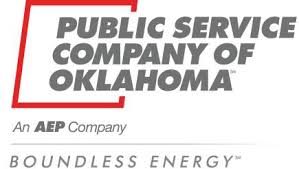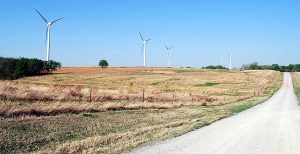
Oklahoma Corporation Commissioners plan a special meeting next week to begin reviewing future energy needs and plans for Public Service Company of Oklahoma.
In the 10:30 a.m. meeting on Monday, November 15, the commissioners will review PSO’s 2021 Integrated Resource Plan. But a vote is not anticipated.
In its 466 page report, PSO indicated it planned to continue the 2018 IRP planning and regulatory actions necessary to implement economic energy efficiency programs in the state. It also intends to conduct an effort to explore opportunities to add cost-effective wind generation in the future to continue taking advantage of the Federal Production Tax Credit.
PSO stated it hopes to have more wind resources operational by the end of 2024 and 2025. The company also intends to carry out a request for proposal to “explore adding cost effective utility-scale solar resources” and have them be operational by the end of the same years.
The company also sees a need for new capacity in the mid 2020’s as its Northeastern 3 unit retires in 2026 and contracts with existing thermal resources also expire.
PSO carried out a technical conference in October to help determine the Integrated Resource Plan but state attorney general John O’Connor was critical of the company, prompting it to hold a second conference to obtain more feedback from stakeholders.

PSO serves approximately 562,618 customers in 232 cities and towns across 30,000 square miles of eastern and southwestern Oklahoma. This includes approximately 484,000 residential, 64,000 commercial, 6,800 industrial, and 8,300 other customers.
PSO’s distribution system includes approximately 15,300 overhead circuit miles and almost 5,200 underground circuit miles. PSO’s distribution system includes approximately 15,900
primary miles and 4,600 secondary miles.
In the plan, PSO discussed a wide variety of energy needs including its partnership with five major utilities to create an Electric Highway Coalition. It would ensure that electric vehicle drivers have access to a corridor of charging stations across several regions of the country.
With the cost of renewable generation alternatives expected to continue to decline, PSO indicated it will have an opportunity to increase affordable clean energy to address future electricity needs, “consistent with PSO’s aim of enable a greener future for all.”
Attorney General O’Connor had critical questions about PSO’s future energy forecast. He pointed out that PSO does not consider existing natural gas generation facilities available in the Tulsa area.
He was also critical that PSO’s modeling relies extensively on the cost of n ew construction for additional generation facilities.
“The draft IRP contains no analysis of using existing generation facilities in or near PSO’s service territory to meet capacity obligations over the IRP’s planning horizon, even though such generation options may be much more affordable for customers,” stated the AG’s letter of concern.
“PSO’s action plan should commit to open and non-restrictive competitive bidding processes that allow it to make use of existing generation resources in the market rather than simply building new facilities,” emphasized the AG.
Another point of concern by the Attorney General was that PSO has not “adequately explained the increase in its load forecast which is discontinuous with its past load data and leads to the large capital expenditures proposed by PSO.
Click here for the PSO report:
file:///C:/Users/User/Downloads/2021%20PSO%20IRP%20Report_102921.pdf






